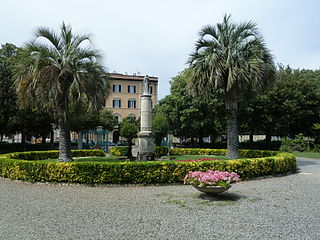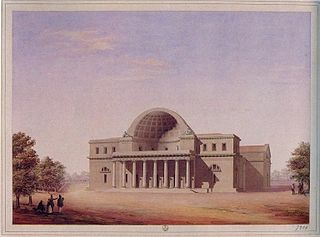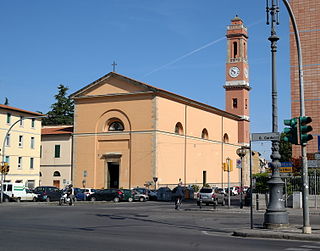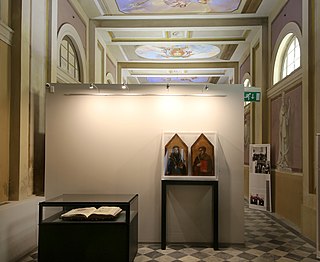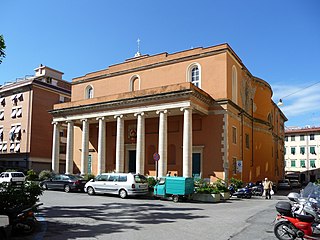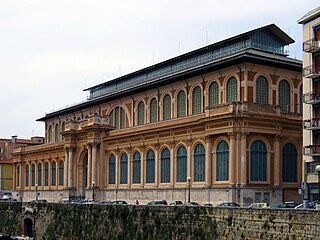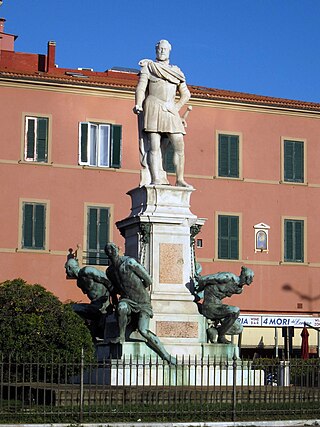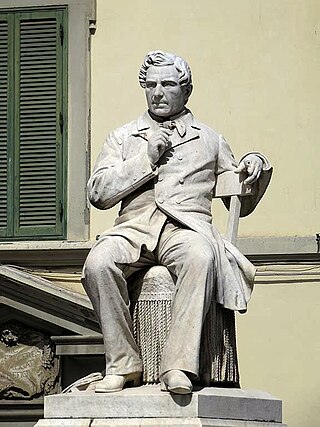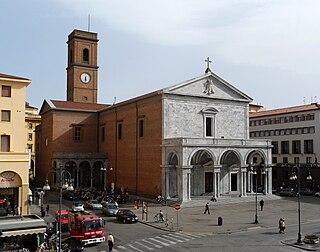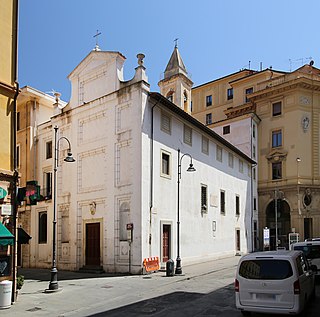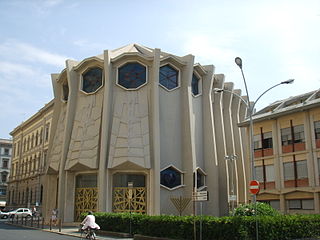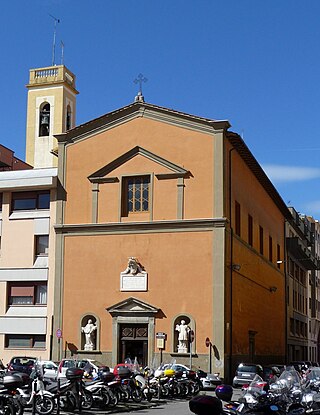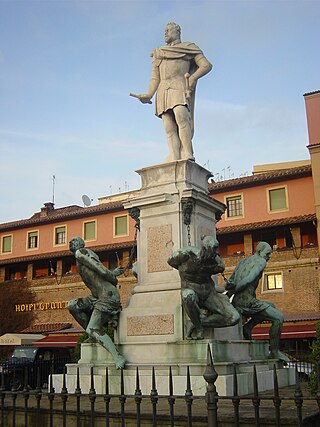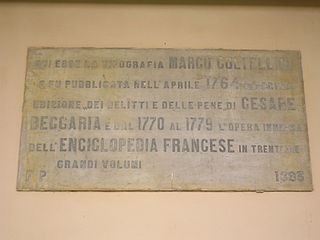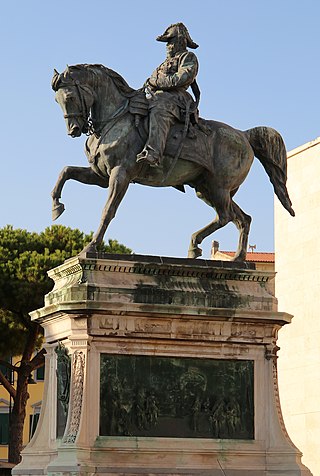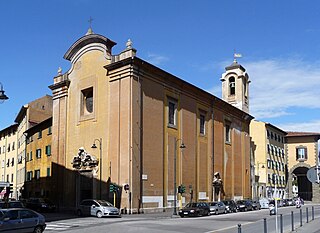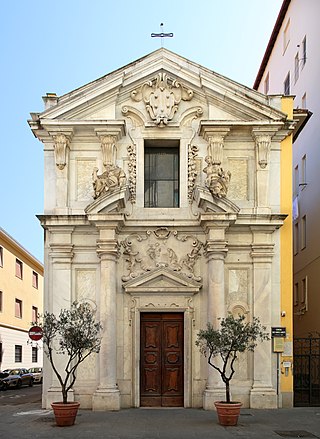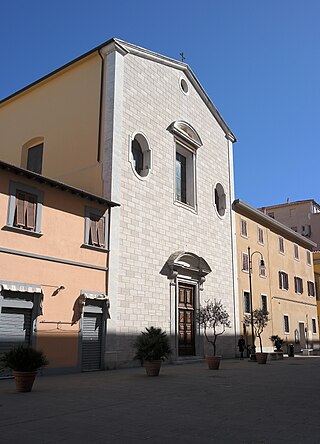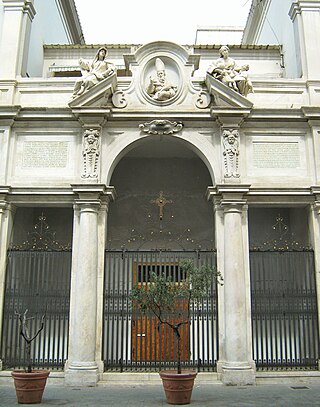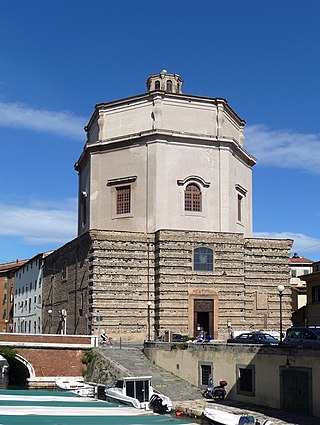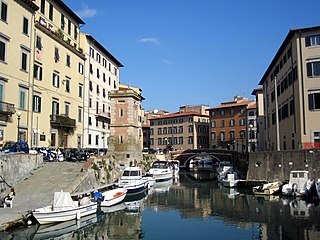Self-guided Sightseeing Tour #1 in Livorno, Italy
Legend
Tour Facts
5.3 km
74 m
Experience Livorno in Italy in a whole new way with our free self-guided sightseeing tour. This site not only offers you practical information and insider tips, but also a rich variety of activities and sights you shouldn't miss. Whether you love art and culture, want to explore historical sites or simply want to experience the vibrant atmosphere of a lively city - you'll find everything you need for your personal adventure here.
Activities in LivornoIndividual Sights in LivornoSight 1: Parco Sandro Pertini Parterre
The Pertini Park, still known by the ancient name of Parterre, is located on Viale Carducci in Livorno.
Sight 2: Cisternone
The Cisternone, or Gran Conserva, is a monumental neoclassical tank built in the first half of the nineteenth century by the architect Pasquale Poccianti, for the water supply of Livorno.
Sight 3: Nuovo Teatro delle Commedie
Sight 4: Chiesa di Sant'Andrea
The church of Sant'Andrea is a place of worship in Livorno; it is located on Piazza del Cisternone, in front of the characteristic bulk of the Gran Conserva. Adjacent to the church is the large Girolamo Gavi Seminary, with the Leonello Barsotti Diocesan Museum.
Sight 5: Museo diocesano Leonello Barsotti
The Leonello Barsotti Diocesan Museum is a museum of sacred art in Livorno.
Sight 6: Chiesa di San Benedetto
The church of San Benedetto in Livorno stands at the end of the large Piazza XX Settembre, outside the pentagonal city of Buontalenti.
Sight 7: Mercato Centrale
Get Ticket*The Mercato delle vettovaglie, also known as the Central Market or Covered Market, rises on the Aurelio Saffi railway yards, along the Fosso Reale di Livorno.
Sight 8: Monumento a Giovanni Fattori
The monument to Giovanni Fattori is a statue located in Largo del Cisternino, Livorno.
Sight 9: Monumento a Francesco Domenico Guerrazzi
The monument to Francesco Domenico Guerrazzi is located in Piazza Guerrazzi in Livorno.
Sight 10: Duomo di Livorno
The cathedral of Livorno, which also has the name of the cathedral of San Francesco, is the main place of Catholic worship in Livorno, mother church of the diocese of the same name.
Sight 11: Chiesa di Santa Giulia
The oratory of Santa Giulia is a church in Livorno, consecrated to the patron saint of the city and born as an oratory of the Confraternity of the Blessed Sacrament and Santa Giulia. The small place of worship stands next to the Duomo, a short distance from Piazza Grande. Attached to the church are the oratory of San Ranieri and the Museum of Santa Giulia. In the latter are preserved sacred furnishings and a table of the Giotto school depicting the saint of the same name, coming from the church of the confraternity, and even more anciently from the destroyed parish church of Santa Giulia near the old port.
Sight 12: Sinagoga
The New Synagogue of Livorno, or Great Synagogue of Livorno, is a Jewish congregation and synagogue, that is located at Piazza Benamozegh 1, in Livorno, in Tuscany, Italy. Designed in the Modernist style, the synagogue was completed in 1922.
Sight 13: Chiesa di San Sebastiano
The church of San Sebastiano is located in the center of Livorno, in the area between the Duomo and the Medici Port. Testimony of the presence of the Barnabite order in the city, today it is entrusted to the Institute of Christ the King Sovereign Priest.
Sight 14: Monumento dei Quattro Mori
The Monument of the Four Moors is located in Livorno, Italy. It was completed in 1626 to commemorate the victories of Ferdinand I of Tuscany over the Ottomans.
Sight 15: Bagno Penale
The Bagno dei forzati, or Bagno delle galere, was a large building that, until the years before the Second World War, stood in Livorno, in the area of the current Government building, between the port and Piazza Grande. It also housed the hospital of Sant'Antonio and here were also the churches of the Purification and that of Sant'Antonio, as well as the Tipografia Coltellini, where the first edition of Cesare Beccaria's Dei delitti e delle pene were printed and, in 1770, the third edition of the Encyclopédie ou Dictionnaire raisonnè des Sciences, des Arts et des Métiers by Diderot and D'Alembert.
Sight 16: Vittorio Emanuele II
The monument to Vittorio Emanuele II is a bronze equestrian statue from Livorno located in the center of Piazza Unità d'Italia.
Sight 17: Chiesa di San Giovanni Battista
San Giovanni Battista is a Baroque-Mannerist style, Roman Catholic church located at the crossing of Via San Giovanni and Via Carraia in central Livorno, region of Tuscany, Italy.
Sight 18: Chiesa della Santissima Annunziata
The church of the Santissima Annunziata, also known as the church of the United Greeks for the professed Greek-Catholic religious rite, is a Catholic place of worship in Livorno.
Wikipedia: Chiesa della Santissima Annunziata (Livorno) (IT)
Sight 19: Chiesa della Madonna
The church of the Madonna, formally dedicated to Saints Mary, Julia and Francis, stands on the street of the same name, in the heart of Livorno, a few meters from the church of the United Greeks and the remains of the Armenian church.
Sight 20: Chiesa armena di San Gregorio Illuminatore
The church of San Gregorio Illuminatore was the former church of the Armenian Catholic branch in Livorno, region of Tuscany. Destroyed after the Second World War, only the elegant Baroque facade remains, now property of the Patriarch of Cilicia, and standing between two three story buildings serving since 2008 as an intercultural center. The facade is visible on via della Madonna, not far from the Temple of the Greci Uniti and the church of the Madonna. The marble facade had statues of Charity and Faith by Andrea Vaccà, and an oval image of St Gregory the Illuminator.
Sight 21: Chiesa di Santa Caterina
Santa Caterina da Siena is a Baroque architecture, Roman Catholic church in the district Venezia Nuova central Livorno, region of Tuscany, Italy. It stands in front of the Piazza dei Domenicani. The church is notable for its tall octagonal dome and lantern rising above a rough, unfinished rectangular base.
Sight 22: Venezia Nuova
Venezia Nuova is a district of the Italian city of Livorno, the only one in the city center that, after the devastation of the Second World War and the post-war reconstruction, has preserved most of its urban and architectural vestiges. Although it does not coincide with the original nucleus of Medici Livorno, it therefore represents the true historic center of the city.
Share
How likely are you to recommend us?
Disclaimer Please be aware of your surroundings and do not enter private property. We are not liable for any damages that occur during the tours.
GPX-Download For navigation apps and GPS devices you can download the tour as a GPX file.
